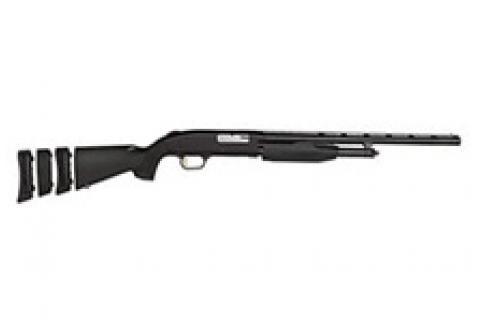
I'm not known for my shotgun shooting prowess. As a matter of fact, I stink. But I don't think it's all me. Few shotguns fit me. I have fairly long arms and high cheekbones, and every time I shoulder a shotgun I'm looking at the back of the receiver instead down the barrel.
 |
| An adjustable stock allows the shooter to fine-tune the stock to any situation. |
Gunsmith AJ Wessel coaches a youth shooting team and fits the stocks for his entire team of shooters. "Young shooters present the most difficult group of shooters to fit," he says. "They don't have many bad habits, but they might grow a couple inches by the end of the season requiring an adjustment of some sort."
Wessel claims the most important dimension when fitting a stock is length of pull. "It needs to be long enough so the shooter isn't hit in the nose with their thumb, but not so long as to have them stretching to pull the trigger."
Wessel uses length of pull as a starting point. After the proper length is established he ensures the firearm is unloaded and has the shooter mount the gun at a stationery target approximately the same height as the shooter. Wessel then steps in front of the mounted gun and checks the shooter's alignment with the center of the rib.
Wessel recommends an adjustable stock. This allows the shooter to fine tune the stock's cheekpiece to center the shooter's eye on the rib. The adjustable stock also gives the shooter room to grow and adjust cast-on or cast-off and pitch of the stock.
Cast is the slight curvature of the stock built into a stock to aid target shooters. Cast off is generally for right-handed shooters; cast on is for southpaws. Many adjustable stocks have an adjustable buttstock as well, complete with a good recoil pad to absorb much of the recoil. Early intervention prevents a flinching habit especially when spending an entire day shooting. Pitch — the angle of the buttplate — can be adjusted before the adjustable pad is installed.
If a shooter grows over the course of the year it is not a big chore to adjust the stock. After making adjustments, Wessel takes the shooter to the patterning board. Wessel explains too few shooters have any idea where their pattern is hitting and most shooters would be much better shots if they knew where the majority of the shot is hitting.
When fitting a stock, Wessel admits the shooter has to know what they want. "Do they want to see a lot of rib or just a little, barrel length is also important as is shooting style or habits. A shooter who does not have the same cheekweld each time will not be a consistent shot"
If your shotgun skills are lacking it might not be your fault; have your shotgun stock fit to your shooting style and watch your scores increase.
- 4447 views

